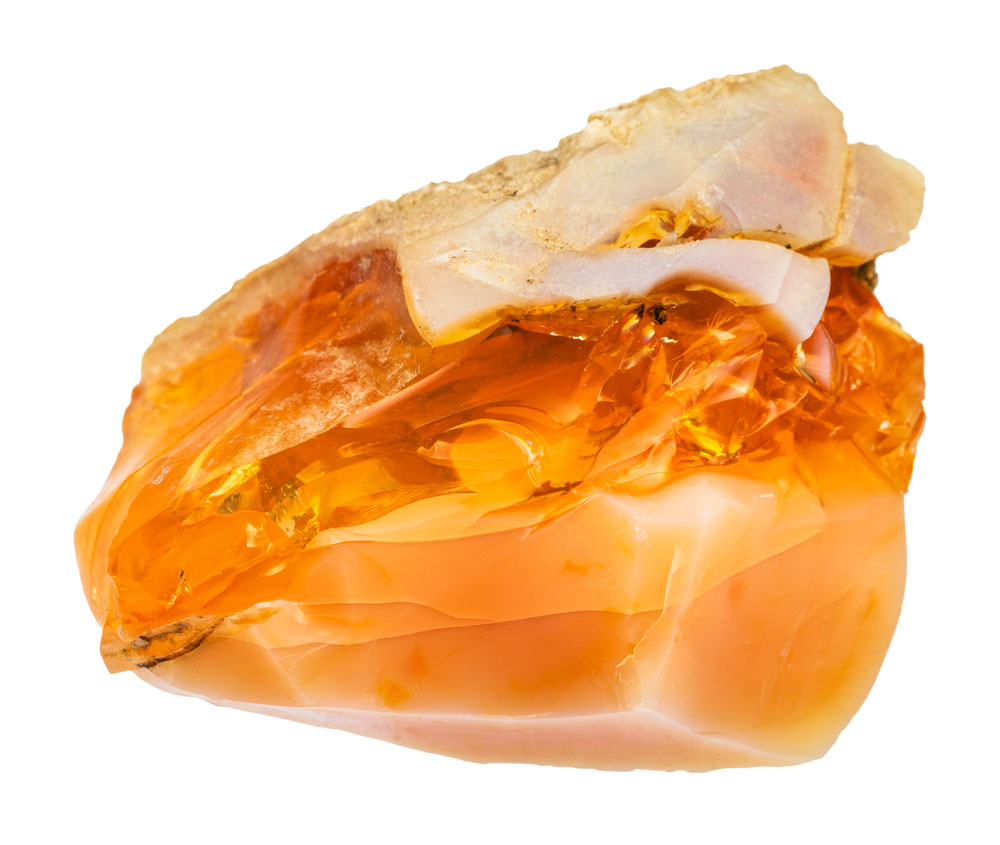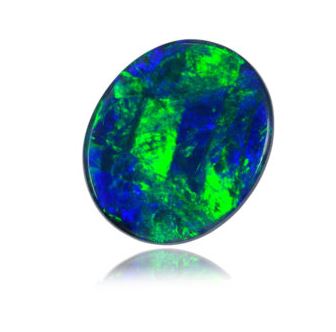It’s autumn, and the trees are ablaze in countless shades of yellow, orange, red, and green. I can’t think of a much better celebration of the colors of the season than October’s birthstone, opal. The Roman philosopher Pliny observed that opals “simulate the flaming fire of burning sulphur and even the bright blaze of burning oil.” The mesmerizing “play-of-color” effect, produced when light interacts with opal’s internal structure, is like a miniature impressionist painting of a forest in October.
 Opal is a rare gemstone, and historically people have gone through great lengths to get their hands on one, as Pliny attests (he had a lot to say about gemstones). A Roman senator named Nonius owned an opal that caught the eye of Marcus Antonius, better known as Mark Antony, who wanted it as a gift for Cleopatra. Despite the appeals of Marcus Antonius, Nonius refused to sell the opal for any price. The refusal enraged Marcus Antonius to the point where Nonius feared for his life. The senator grabbed his family and his beloved opal and exiled himself from Rome, leaving Marcus Antonius empty-handed. Perhaps it was for the best; didn’t he know that Cleopatra preferred emeralds?
Opal is a rare gemstone, and historically people have gone through great lengths to get their hands on one, as Pliny attests (he had a lot to say about gemstones). A Roman senator named Nonius owned an opal that caught the eye of Marcus Antonius, better known as Mark Antony, who wanted it as a gift for Cleopatra. Despite the appeals of Marcus Antonius, Nonius refused to sell the opal for any price. The refusal enraged Marcus Antonius to the point where Nonius feared for his life. The senator grabbed his family and his beloved opal and exiled himself from Rome, leaving Marcus Antonius empty-handed. Perhaps it was for the best; didn’t he know that Cleopatra preferred emeralds?
The Romans were far from history’s first opal connoisseurs. In 1938, British archaeologists uncovered an opal, likely of Ethiopian origin, in a 6000-year-old burial mound in Kenya. The discovery marked the oldest known use of opal for decorative purposes.
Today, Ethiopia is an important producer of opals, but Australia is by far the world’s main source, producing 95% of the world’s precious opals. Mexico, Peru, and Brazil are also sources of opal. Places like these dominate opal production due to the special environmental conditions required for opals to form. In places that are usually arid but experience seasonal rains, such as the Australian Outback, rainwater seeps into the dry ground, carrying a compound of silicon and oxygen deep into the earth. When the water evaporates, it leaves deposits of silica behind, and these deposits form opal over the course of millions of years (WOW!).
So many choices: Australian or Ethiopian? Doublet, triplet, or solid?
Though this process guides opal formation around the world, there are some differences between Ethiopian and Australian opal that make Australian opal more appealing to me. Ethiopian opals are hydrophane; that is, they are porous enough to absorb water and other chemicals, which can sometimes cause temporary color changes. And depending on how porous the opal is, this absorption of liquids can even cause the opal to crack. Because these opals are porous, they can be injected with dye to artificially color them. For these reasons, I prefer, and trust the purity, of Australian opals.
We also only use solid opals in our pieces. Opals described as “doublets” or “triplets” are not solid opals. “Doublet” refers to a slice of opal glued to a black backing that makes the colors more vibrant. A triplet contains even less opal, just a thin sliver sandwiched between a black backing and a dome of glass or quartz. While a doublet set into a ring might be hard to distinguish from a full opal, a triplet is much easier to spot. These opals have the same problems as hydrophane opals in that they can be damaged if immersed in water.

- Boulder opal is a type of opal still attached to its host rock. The effect of a brilliant, sparkling opal against a gray or brown stone is striking, bringing to mind a desert under a night sky full of stars, or a map of rocky islands in a tropical sea. Some boulder opals are more thoroughly integrated with their host rock, the opal and the rock creating the types of patterns found in Gustav Klimt paintings.
- Black opal is the rarest variety of opal, and one of the rarest gemstones in the world. Some black opals can cost up to $10,000 per carat, and it’s easy to see why. With its flecks of white and mysterious clouds of blue, green, or red on a deep black background, looking into a black opal is like staring into the depths of outer space.
- Fire opal is one of my personal favorites. Their orange hues are not quite like anything else, like holding a sunset between your fingers. Unfortunately, they’re not very popular, as it’s a color people don’t wear very often. But we do love them, and if you do too, let us know—we take custom requests!
Those are just a few of the many varieties of opal, the versatile and enchanting birthstone of October. Which one is your favorite?











